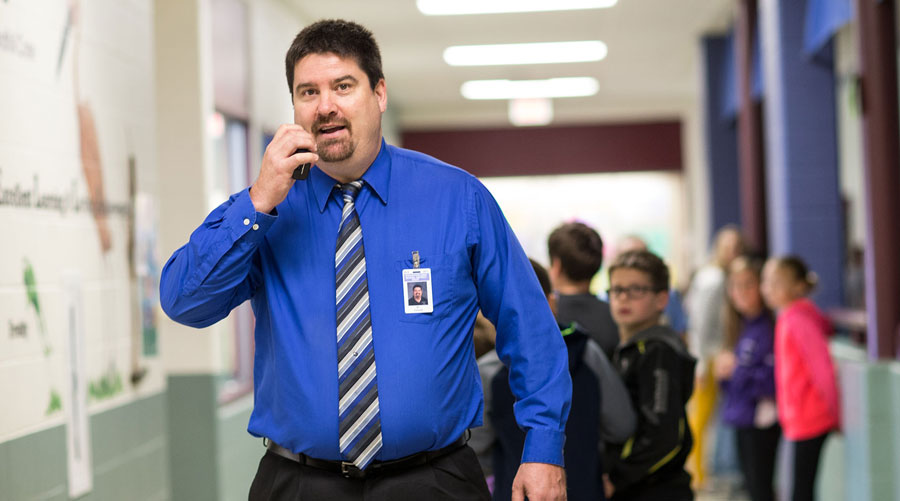It’s almost back-to-school time, and professors, faculty members and administrators are preparing to welcome college students back to campus. But for higher education institutions, preparations must involve more than just creating syllabi and scheduling student events. It’s crucial to spend time evaluating campus safety protocols to identify and address weaknesses and oversights.
It’s not enough to wait until an emergency situation happens and see how the existing emergency protocols work. Colleges and universities have a duty of care to protect their students and staff members, and that requires taking a preventative approach to campus safety.
Many Higher Education leaders are using this time to evaluate campus safety plans to ensure they’re comprehensive and effective. In an emergency, every second counts. Students and faculty members must have the means to report a crisis situation immediately, and first responders must have the information and access they need to deploy an appropriate response. True emergency preparedness is comprehensive and must include prevention and mitigation as well as response and recovery.
Top Threats to Campus Safety
When you think about safety on a college campus, what comes to mind? Higher education institutions must prepare for a wide range of crises beyond “typical” threats such as fires, severe weather and technology interruptions.
This survey of education providers shows how colleges and universities rank potential threats:
- Student mental health: The second-highest concern (59 percent) for higher education institutions.
- Faculty/staff mental health: 44 percent of respondents listed this as a significant concern.
- Crime: Higher education institutions expressed a significant increase in crime-related concern (a 20 percent increase).
- Active shooter: Concerns about an active assailant rose 15 percent among higher education institutions.
- COVID-related concerns: 71 percent of respondents listed this as their top safety concern.
Other safety priorities for higher education institutions include staffing concerns, severe weather, faculty and student physical health and medical emergencies.
While most campuses have adequate infrastructure and protocols relating to severe weather and fires, they may not have as many response measures designed specifically for active assailants, pandemic outbreaks and mental health crises. However, survey results show that 39 percent of higher education respondents are investing more resources into mental health.
Outdated technologies such as blue light stations don’t offer enough protection to students, nor do they support critical communication between faculty, students, 9-1-1 dispatch, campus security and first responders. Institutions must critically evaluate their existing protocols and find ways to integrate modern technological solutions that support faster reporting, better coordination and improved response outcomes.
Prevention-Oriented Campus Safety Plans
College campuses have long had a reputation for being vulnerable when it comes to both internal and external threats. Mental health crises, sexual assault, drug overdoses, domestic violence and active assailant situations are issues that college campuses must be aware of and prepared for.
Unfortunately, these crises often occur on university campuses because there aren’t enough resources dedicated to prevention. Furthermore, emergency response procedures frequently suffer from delays and miscommunications because there are few systems in place that facilitate collaboration between internal and external emergency personnel.
While it’s crucial to identify and address problems in emergency response and recovery procedures, campus administrators must also invest in preventative strategies. Improving campus safety can help mitigate common threats to students and staff members, which in turn promotes better mental health and creates an environment that’s more conducive to learning.
The first step in taking preventative action is to evaluate the campus’s current protocols and safety technology. Here are some crucial questions to ask:
- Is your current system easy to use?
- Is there a central location where students and faculty can access critical information: important phone numbers, mental health resources and emergency plans?
- Can users quickly report an emergency from anywhere, or do they have to locate and use traditional hardware (e.g., a fire alarm or blue light station)?
- How do administrators send emergency communications to students and faculty?
- Do emergency reporting tools incorporate next-generation 9-1-1 features (e.g, text, photos, geolocation and live video streaming)?
In answering these questions, administrators can get a clear picture of how effective their campus’s existing safety technology is and identify critical features that must be added.
A Campus Safety App Protects Students and the Community
Many higher education institutions have decided to augment traditional safety infrastructure (e.g., fire alarms, PA systems and blue light stations) with modern technological solutions. Rave AppArmor is a campus safety app that provides critical benefits to students and faculty members.
Faculty members and administrators can use multiple communication methods (e.g., SMS text, push notifications, email and voice) to send critical information; most students will check texts or notifications sooner than email messages. They can also access an internal communication platform to coordinate and manage response procedures. Detailed reporting and analytics features make it easier for administrators to identify trends and see where improvements must be made.
AppArmor also offers many benefits to student users. Students can instantly report an emergency from the app and immediately get connected to campus security and/or local police. They can even request help via text-based chat. App-based emergency reporting enables precise geolocation, so first responders can arrive sooner.
Users can anonymously report suspicious behavior, bullying and potential threats, which increases engagement and improves campus safety. Additionally, virtual escort features such as Friend Walk and Virtual Walk-Home allow users to share their real-time location data with a personal contact or dispatcher.
AppArmor is fully customizable, so educational institutions can choose key features and incorporate their own branding. Additionally, the app allows all users (students and faculty) to quickly access essential content, from mental health resources, disability services and emergency plans to interactive maps and important phone numbers.





Comments are closed here.